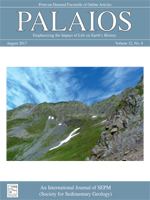Molluscan taphonomic patterns below the sediment-water interface in three freshwater shallow lakes from the Southeastern Pampa Plain, Argentina (Nahuel Rucá, Las Mostazas, and Los Carpinchos), were analyzed in order to explore the taphonomic alteration suffered by mollusks with depth and determine if this taphonomic alteration varied locally within lakes or between them. Short cores (approximately 30 cm) from littoral environment as well as open water were sampled in each lake. Nine mollusk species were identified: Heleobia parchappii, H. australis, Biomphalaria peregrina, Uncancylus concentricus, Musculium argentinum, Drepanotrema kermatoides, Succinea meridionalis, Antillorbis nordestensis, and Pomacea canaliculata. The highest percentage of moisture, organic matter and carbonates as well as less alkaline pH were recorded at the top of the cores and in littoral environments, indicating less favorable conditions for preservation. Results suggest that the taphonomically active zone occupies the first 10 cm below the sediment-water interface.
How to translate text using browser tools
1 August 2017
MOLLUSCAN TAPHONOMIC PATTERNS BELOW THE SEDIMENT-WATER INTERFACE IN FRESHWATER SHALLOW LAKES FROM THE SOUTHEASTERN PAMPA PLAIN, ARGENTINA
PAULA ANDREA CRISTINI,
CLAUDIO GERMÁN DE FRANCESCO
ACCESS THE FULL ARTICLE
It is not available for individual sale.
This article is only available to subscribers.
It is not available for individual sale.
It is not available for individual sale.

PALAIOS
Vol. 32 • No. 8
August 2017
Vol. 32 • No. 8
August 2017




